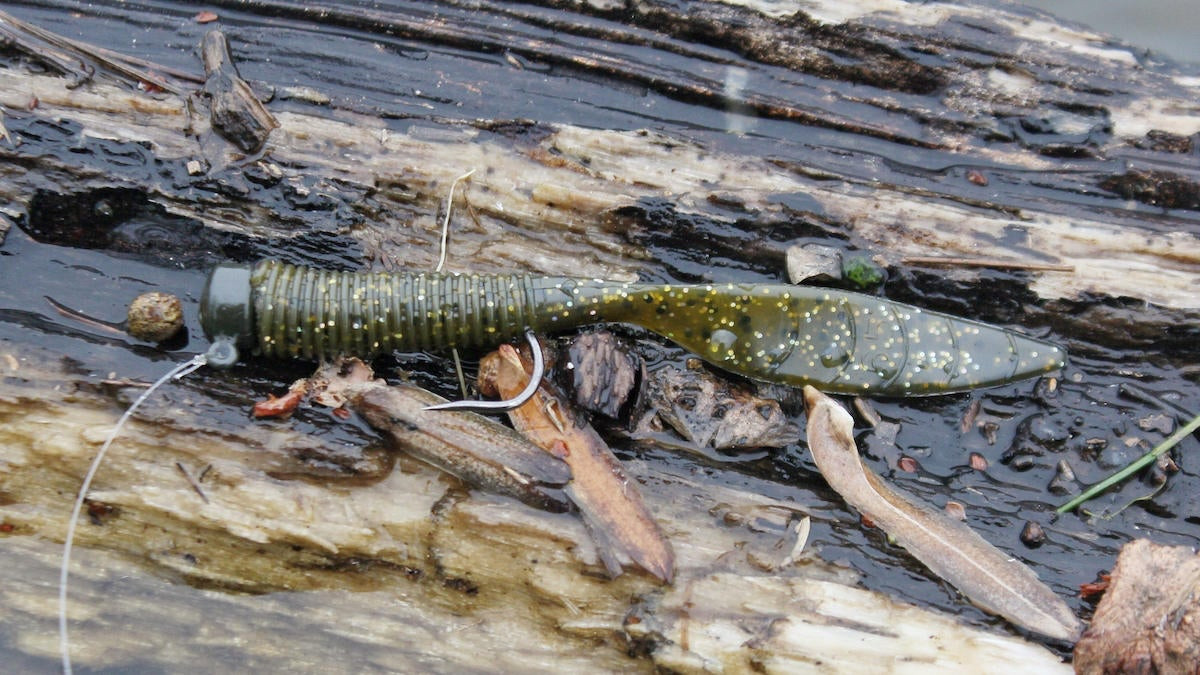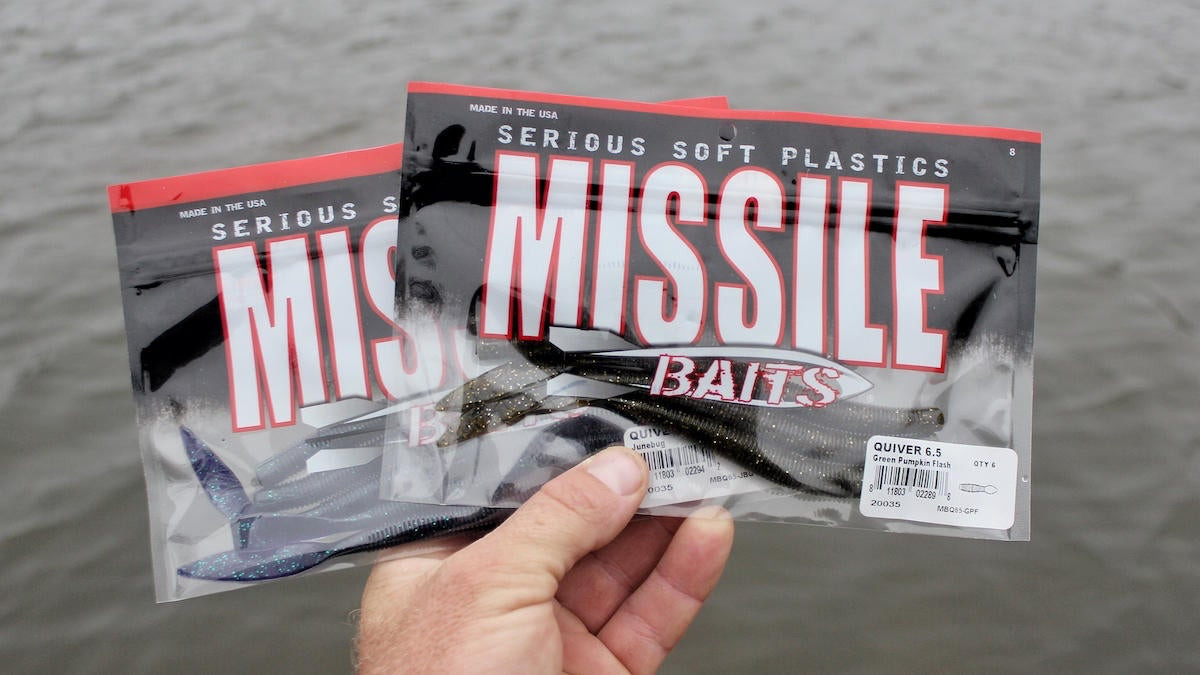What is there to say about a bass fishing worm? Well, a lot actually. Especially when one is as versatile as the Missile Baits Quiver. It comes in a multitude of colors and two sizes, 4 1/2 inches and 6 1/2 inches. The name “Quiver” I can only assume is derived from the tail which quivers no matter how steady you try to hold it. I found that out while attempting time and time again to get a photograph of it in low light that wasn’t blurry.
The worm also looks a bit like an arrow so perhaps a double entendre is in the works here, since a quiver is where arrows go. Bombs, Shockwaves and Tomahawks. But maybe I’m thinking a little too far into it now. I’m not overthinking the worm as a whole, however. There really is a lot you can do with it. So let’s dive into some of the finer details of the Missile Baits Quiver now.

Material
The material from which the Missile Baits Quiver is made has that good mixture of soft but still durable; a good density to still allow for a lot of action in the tail without having to worry about the tail getting torn off constantly. Again, you can barely hold the worm still if you try to, so you can only imagine the subtle and constant action the bait has in the water as it tries to reach equilibrium.
Ringed body
I like rings on a worm. I’m not sure if there’s a ton of scientific evidence to back up my preference here, but it seems like a lot of the best worms and my personal favorites have rings around them. So these rings must feel more realistic to a fish and that causes them to hold onto a bait a little longer.
While I’m certainly no scientist, I’ve heard that these types of rings displace a bit more water than a smooth-bodied worm. This may be the reason so many anglers are having success with the quiver in dirty water as well. The bass may not be able to see it very well, but apparently they can feel it.
Versatile
I’ve also found the Quiver to be quite versatile. It can be rigged on a shaky head, drop shot, power shot, Neko rig, Carolina rig, Texas rig and the list goes on. This bait has a fairly simple design that allows it to do a lot of things really well.
All of that again comes back to the quiver of the tail and that of the body of the worm itself as the bait falls and is worked through the water. With just the slightest movement of your rod tip, line or even just the water, the entire worm undulates and seems to entice a lot of bites. Even on tougher days, it seems like it doesn’t have “too” much action to scare off those finicky post-frontal bass. It attracts attention in dirtier water but it’s also subtle enough to fool ’em in clear water.
Recyclable
The Quiver’s versatility actually reaches beyond its life expectancy. Say you’re using this worm on a lightweight Texas rig and you catch a few fish on it; the head and midsection of the worm start to tear from the hook.
Well now, instead of discarding the worm, you can cut off the torn part and are left with the perfect little Ned rig bait. Alternatively, say you do lose the tail to a particularly toothy critter; now you have a really well-balanced stick worm. This thing is like the Swiss Army knife of worms.
In conclusion
There are several things you can do and do quite well with the Missile Baits Quiver. A simple design to the naked eye that was surely difficult to reach in development, baits like this that have well balanced components and are so versatile are hard to come by.
The versatility of this bait makes it the perfect choice for anglers faced with tackle limitations, be it a kayak angler or someone walking the banks of a pond. Having a pack of baits and a handful of terminal tackle while still being able to make multiple presentations to the fish puts you at a huge advantage in those situations.
Whether it’s the rings or the bait’s density that make it something the fish want to hold onto, they hold onto it all the same. So I give the Quiver a couple thumbs up and say it’s worth a try.
















